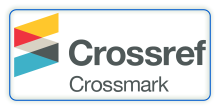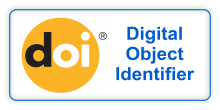NATION BRAND ARCHITECTURE- A REALITY OR REVERIE FOR AFRICAN NATIONS: THE CASE OF BOTSWANA
DOI:
https://doi.org/10.29121/ijoest.v7.i2.2023.467Keywords:
Brand Architecture, Nation Brand, Nation Branding, Nation Brand ArchitectureAbstract
Nation brand architecture gives a ‘sense of mission’ which can help unify key players, concentrate resources, increase efficiency, and create synergies in customer attraction Joao (2018). However, what seemingly works for product/ corporate brands appears to be more of a brown study for nation branding. Adoption of nation brand architecture is gaining traction in Western nations. Many countries in Africa such as Botswana seem not to be consciously employing this seemingly beneficial concept.
This paper therefore explores the extent to which Botswana; an African nation has adopted this concept. It also focuses on how the nation embeds and applies the existing national identities such as national colours (reflected in the nation flag), symbols, animals, and plants in the brand architecture.
The study employs a content analysis approach that investigates the nation against four overarching themes of brand architecture. Using the Dinnie (2008) Nation Brand Architecture Model (NBAR), the paper draws valuable insights from an analysis of brand architecture concepts as well as the current adopted or default brand architecture for the nation of Botswana. The paper forms the initial sequel of papers on Botswana nation brand architecture model. The initial findings present a tenuous understanding of the adopted architecture reflective of both the endorsed and branded house architecture.
Downloads
References
Aaker, D. A., and Joachimsthaler, E. (2000). The Brand Relationship Spectrum : The Key to the Brand Architecture Challenge. California Management Review, 42(4), 8-23. https://doi.org/10.1177/000812560004200401.
Ahholt, S. (2002). Nation Branding: A Continuing Theme. Journal Of Brand Management. https://doi.org/10.1057/palgrave.bm.2540101.
Anholt, S. (2007). Competitive Identity. Palgrave Macmillan. https://doi.org/10.1057/9780230627727.
Anholt, S. (2010). Why National Image Matters? World Tourism Organization and European Travel Commission.
Benur, A. M., and Bill Bramwell, B. (2015). Tourism Product Development and Product Diversification in Destinations. Sheffield Hallam University, S1, 1WB, UK. https://doi.org/10.1016/j.tourman.2015.02.005.
Blair, R. D., and Lafontaine, F. (2005). Economics of Franchising. Cambridge University Press. https://doi.org/10.1017/CBO9780511753879.
Brand Botswana. (2012). Botswana Pride Mark.
Brand Botswana (n.d.). About Brand Botswana.
Dinnie, K. (2008). Nation Branding, Concepts, Issues. Practice. https://doi.org/10.4324/9781003100249.
Dinnie, K. (2010). Nation Branding: Concepts, Issues, Practice. Nation Branding, 10, 1-264. https://doi.org/10.4324/9780080554570.
Distility. (2015). Brand Architecture Solution.
Domeisen, N. (2003). Is There a Case for National Branding? In International Trade Forum. International Trade Centre, 1.
Douglas, S. P., and Craig, C. S. (2002). Dynamics International Brand Architecture : Overview and Direction for Future Research. Paper Presented at International Marketing Conference- CIBER University of Connecticut October 19. 2001.
Endziņa, I., and Luņeva, L. (2004). Development of a National Branding Strategy: The Case of Latvia. Place Branding, 1(1), 94-105. https://doi.org/10.1057/palgrave.pb.5990009.
Etchner, M. C., and Richie, B. J. (2003). The Meaning and Measurement of Destination Branding, 14(1).
Fan, Y. (2006). Branding The Nation : What Is Being Branded? Journal of Vacation Marketing, 12(1), 5-14. https://doi.org/10.1177/1356766706056633.
Fanning, J. (2011). Branding and Begorrah: The Importance of Ireland's Nation Brand Image. Irish Marketing Review, 21(1/2), 23.
GO Botswana (n.d.).
Gilmore, F. (2002). A Nation- Can it be Repositioned? Spain-The Success Story of Nation Branding. Journal of Brand Management, 9(4), 281-293. https://doi.org/10.1057/palgrave.bm.2540078.
Glynn, M. S., and Woodside, A. G. (2009). Business To Business Brand Management Glynn. In MS and A. G. Woodside (Eds.), Business-To-Business Brand Management. Emerald Group Publishing.
Hankinson, G. (2009). Managing Destination Brands : Establishing A Theoretical Foundation. Journal of Marketing Management, 25(1-2), 97-115. https://doi.org/10.1362/026725709X410052.
Harish, R. (2010). Brand Architecture in Tourism Branding: The Way Forward for India. Journal of Indian Business Research, 2(3), 153-165. https://doi.org/10.1108/17554191011069442.
Kleppe, I. A., Iversen, N. M., and Stensaker, I. G. (2002). Nation Images in Marketing Strategies: Conceptual Issues and an Empirical Asian Illustration. Journal of Brand Management, 10(1), 61-74. https://doi.org/10.1057/palgrave.bm.2540102.
Kleppe, L. A., and Mossberg, L. (2006). Company Versus Nation Branding "Same, Same but Different". Journal of Brand Management.
Koschmann, A. (2019). Evaluating the House of Brands Strategy Using Brand Equity and Intra-Firm Loyalty. Journal of Marketing Management, 7(1), 94-104.
Marandu, E. E., Amanze, D. N., and Mtagulwa, T. C. P. (2012). Nation Branding: An Analysis of Botswana's National Brand. International Journal of Business Administration, 3(2), 17. https://doi.org/10.5430/ijba.v3n2p17.
Molainen, T. and Rainsto, S. (2009). How to Brand Nations, Cities and Destinations. Palgrave Macmillan. https://doi.org/10.1057/9780230584594.
Muller, C. C. (1998). Endorsed Branding: The Next Step in Restaurant-Brand Management. Cornell Hotel and Restaurant Administration Quarterly, 39(3), 90-96. https://doi.org/10.1177/001088049803900317.
Olins, W. (2002). Branding The Nation-The Historical Context. Journal of Brand Management, 9(4), 241-248. https://doi.org/10.1057/palgrave.bm.2540075.
Pathak, K. P. (2014). Effective Strategies to Rebrand Bangladesh : Application of Simon Anholts' Hexagon Model of Branding. Journal of Business, 35(1), 16-32.
Rahman, K., and Areni, C. S. (2009). Service Brand Relationship Matrix : Brand Strategy for Services. World Journal of Management, 1(1), 141-152.
Statistics Botswana (n.d.).
Zelenskaya, E., and Elkanova, E. (2021). Designing Place Brand Architecture : The Potential of a Sub-Brands Strategy. Journal of Product and Brand Management, 30(1), 167-179. https://doi.org/10.1108/JPBM-08-2019-2551.
Zenker, S., and Braun, E. (2017). Questioning A "One Size Fits All" City Brand : Developing a Branded House Strategy for Place Brand Management. Journal of Place Management and Development, 10(3), 270-287. https://doi.org/10.1108/JPMD-04-2016-0018.
Published
How to Cite
Issue
Section
License
Copyright (c) 2023 Tshepo Maswabi, Jane Monyake, Paul Mburu

This work is licensed under a Creative Commons Attribution 4.0 International License.






























